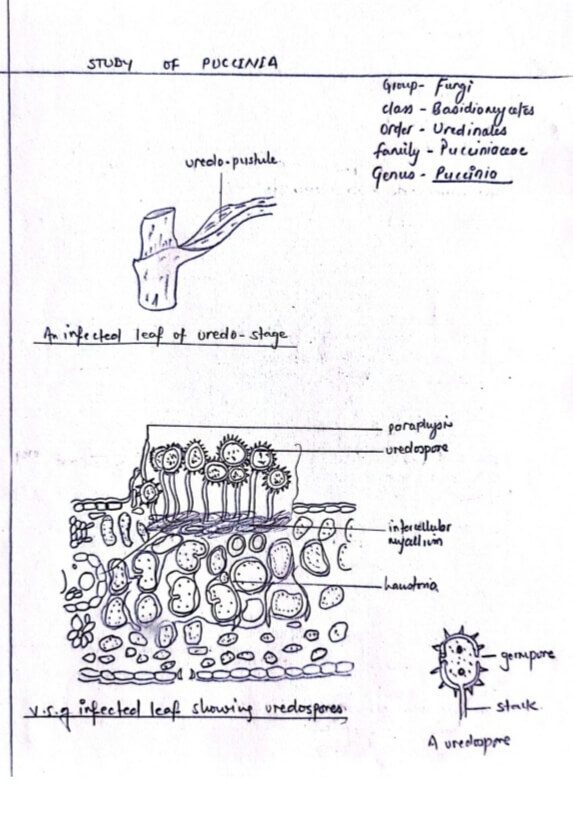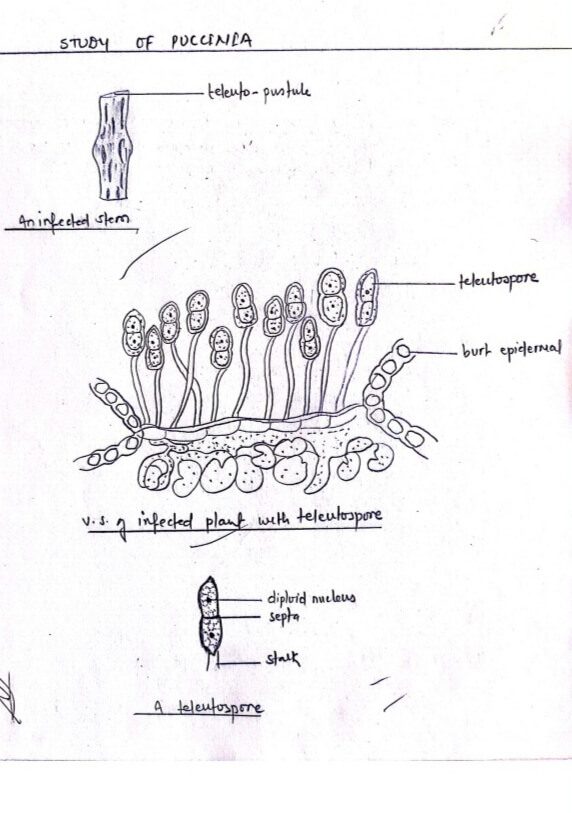COMMENTS ON PUCCINIA
Disease symptoms
i) obligate parasite:
Puccinia is an obligate fungus completing its life cycle in two host primary host wheat plants and secondary host barberry leaf.
ii) Brownish pustules:
The early symptom in wheat appears in stem, leaf and leaf sheath as oblong reddish brown patches uniting each other with deposition of brown powder like uredospore over the infected areas.
iii) Black rust disease:
Towards the end of season, the elongated. irregular dark brown or black rust like pustules appear on the stem and leaf with extruded or liberated black powdery teleutospore over the affected areas.
iv) Barberry leaves:
In secondary hoot, the black rust symptoms appear on both upper and lower surfaces of barberry leaves as a group of black spores on the upper surface and brownish spores of under surface of infected leaves.
Somatic structure
Mycelia :
The somatic body is well developed branched intercellular septate mycelium.
Reproductive structure
i) Uredospores:
They are found in uredospores pustules. Each uredospore is a stalked, oblong, binucleate, double walled structure. The outer exosporium is thick brown, echinulate and the inner thin colorless endospore. There are four germ pores at the middle of four sides of the cell wall. It contains oily substances along with brownish pigment embedded in cytoplasm.

ii) Telentaspore:
They are found in teleutospores pustules. Each teleutospore is a stacked, spindle-shaped, bi-celled, double walled and thick layered structure. The outer well is a thick dark brown smooth exosporium and inner one thin colorless endosporium.

